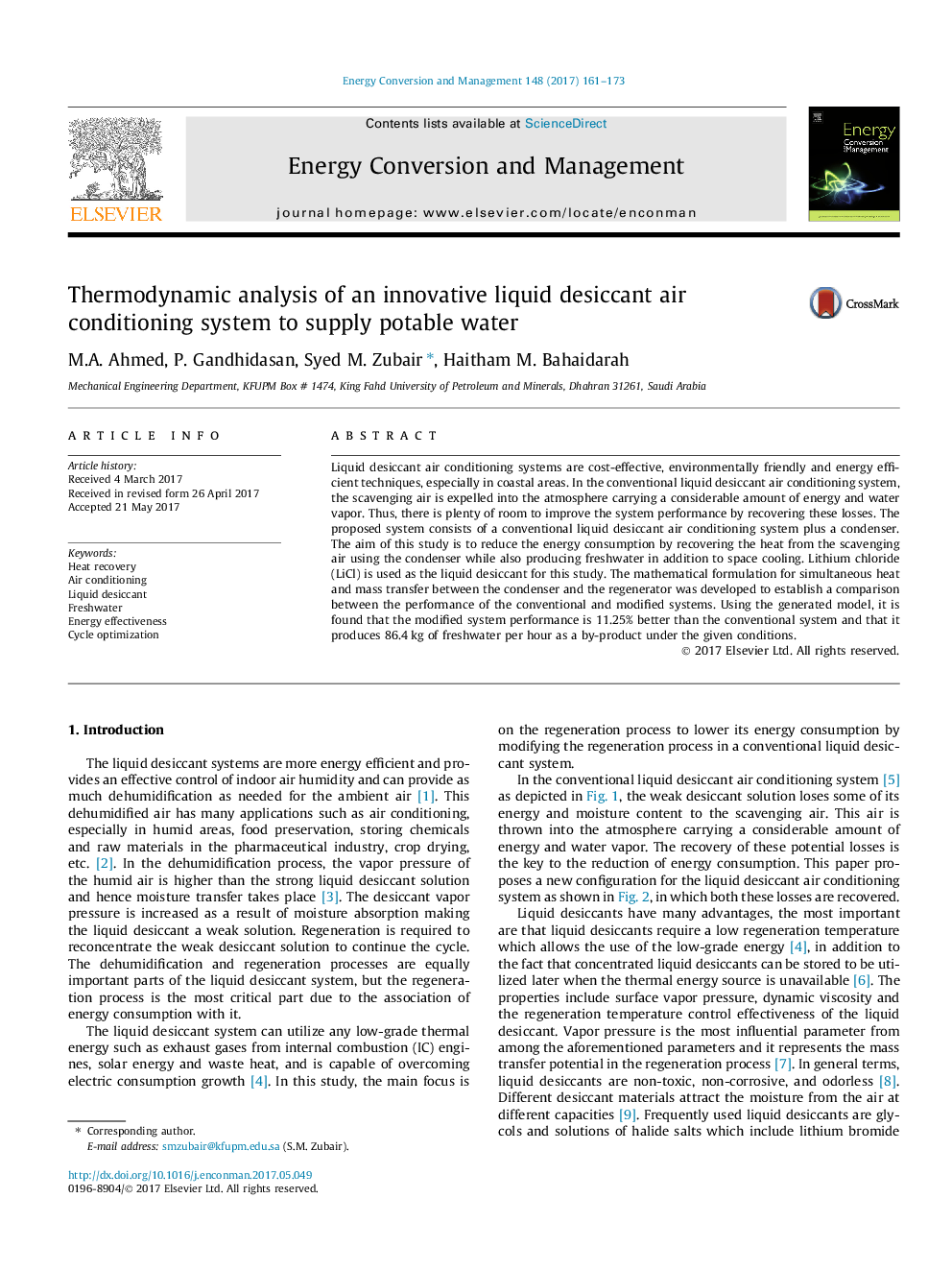| Article ID | Journal | Published Year | Pages | File Type |
|---|---|---|---|---|
| 5012524 | Energy Conversion and Management | 2017 | 13 Pages |
Abstract
Liquid desiccant air conditioning systems are cost-effective, environmentally friendly and energy efficient techniques, especially in coastal areas. In the conventional liquid desiccant air conditioning system, the scavenging air is expelled into the atmosphere carrying a considerable amount of energy and water vapor. Thus, there is plenty of room to improve the system performance by recovering these losses. The proposed system consists of a conventional liquid desiccant air conditioning system plus a condenser. The aim of this study is to reduce the energy consumption by recovering the heat from the scavenging air using the condenser while also producing freshwater in addition to space cooling. Lithium chloride (LiCl) is used as the liquid desiccant for this study. The mathematical formulation for simultaneous heat and mass transfer between the condenser and the regenerator was developed to establish a comparison between the performance of the conventional and modified systems. Using the generated model, it is found that the modified system performance is 11.25% better than the conventional system and that it produces 86.4Â kg of freshwater per hour as a by-product under the given conditions.
Keywords
Related Topics
Physical Sciences and Engineering
Energy
Energy (General)
Authors
M.A. Ahmed, P. Gandhidasan, Syed M. Zubair, Haitham M. Bahaidarah,
